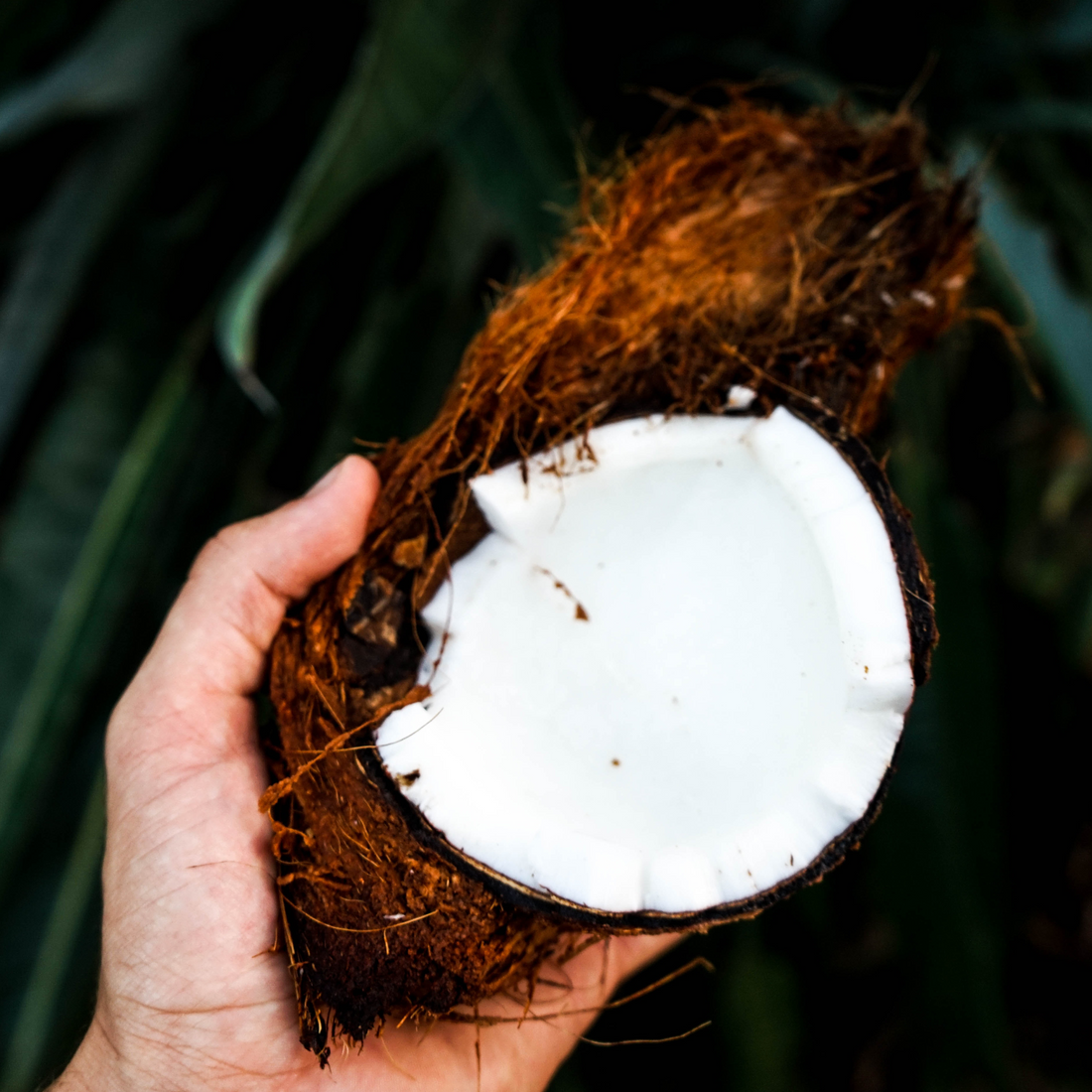
Why Coconut Wax?
Share
Paraffin Wax (derived directly from petroleum), as a product of the oil industry, is the very definition of unsustainable. A 2009 study found that burning paraffin candles released toxic chemicals (toluene) into the air. However, the National Candle Association questions this based on the fact this study has yet to be published by a scientific publication.
The takeaway: With so many other options out there, there's just no reason to use it. It's cheap, unnatural and unsustainable.
Palm Wax (derived from palm oil) is a sustainable alternative to paraffin, as efforts were put into place with the Roundtable on Sustainable Palm Oil (RSPO). However, deforestation practices were rampant and endangering many species of animals as the demand for palm wax increased. A Greenpeace report done in 2018 has made it clear it is difficult to source genuinely sustainable palm oil. This is unfortunate because palm oil actually scores higher than most other oil sources in many respects if it weren't for poorly run practices and supply chains.
The takeaway: When sourcing or buying products that contain palm oil - be sure that they can prove they aren’t destroying rainforests – which requires a RSPO Sustainable Palm Oil Certificate.
Soy Wax (derived from soybean oil) has recently become the most popular natural wax, which is due mainly to the fact that it is cheaper because it’s a byproduct of the giant soybean industry. Concerns about deforestation by environmental groups like the WWF, the impact of industrialized farming, and the unhealthy amounts of pesticides and fertilizers used to grow soybeans are all cause to put soy on our naughty list.
In the U.S. 94% of soy agriculture is genetically modified. After chatting with our suppliers and others, we discovered it is impossible to source soy wax that is verifiably 100% non-GMO, despite what some candle labels claim. They get away with a little loop hole because soy wax has no genetically modified materials present. Confused? When soybeans (as GMO) are crushed, and the oil is separated from the protein meal, all the genetic markers associated with that soybean that is GMO will stay with the protein meal. Our soybean-based waxes are made from soybean oil, so technically, if you were to try to measure any genetic markers (which have done by our supplier), it would show it as "not detected." You can see how this can be misleading as these soy waxes are still sourced from soybeans that are genetically modified.
The takeaway: Be sure to look at your soy candles to see if they are blended with any other waxes, like paraffin. I was amazed when shopping for waxes - they all were labeled as soy, but when you looked at the full ingredient list, these "soy" waxes were in-fact blends and not 100% soy.
Beeswax (produced by honey bees) in many regards is one of the more sustainable options. Beeswax has a natural golden hue and honey-like scent. This makes it a great standalone candle but one that can be difficult to blend with other scents. You can find bleached beeswax, which is white; however, through this process, the candle is left with minimal scent throw. Ultimately, we wanted a vegan and cruelty-free option (save the bees).
The takeaway: For beeswax to be cruelty-free, it has to be harvested at a low rate, so that there are no real negative effects on the colony. However, there are many practices that are not so good.
Coconut Wax (derived from coconut oil) made of 'high-melt' coconut oil blended with other natural waxes (usually soy) is what we use. It has been overlooked so far in the candle industry because it is more expensive per pound (hence you may find our candles a little higher priced). You get what you pay for most of the time, and overall we like the benefits:
-
Coconut oil is made via a natural process...more on that coming soon!
-
Made from renewable sources, that can replenish at a faster rate than many alternatives. The tree does not have to be cut down - only the fruit - leaving the tree to produce more, providing a long-term, reliable supply.
-
Coconuts are not genetically modified (as seen with soy).
-
The deforestation practices linked with palm oil are not associated with the coconut industry.
-
Coconut wax burns slowly and cleanly and throws scent extremely well.
The takeaway: All coconut wax candles are blends (meaning they contain some amounts of either or combination of soy, palm, paraffin) because pure coconut wax has a very low melt point (92°F), which is not suitable for making a candle alone. Any waxes that claim to have coconut based waxes will have blended components (e.g., waxes listed above) to increase the melting point, appearance, fragrance retention and fat bloom resistance, and because of this, coconut wax is still not perfect. Nevertheless, we believe it is the best option for now.
So whats in our wax?
Our coconut oil supply currently comes from the Philippines. The coconut business makes up ¼ of the Filipino population. It's an industry with an intense amount of government scrutiny about its practices. As with other cash crops like bananas and coffee, there are concerns about the wages farmers are paid. When we started researching coconut wax suppliers, we found one that stood out that shares our ethics for fair-trade and environmental practices. Most notably, they established the Sustainable Certified Coconut Oil (SCNO) supply chain - a socially responsible, environmentally sound, and economically viable supply chain that works for everyone. Music to our ears!
Our candles are made with a proprietary blend of 100% coconut and 100% soy wax. We are currently looking for an alternative to soy, as well as a source that is certified organic and sustainable.

1 comment
So what company/ wax supplier did you end up choosing for the coconut wax?